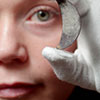The Monymusk reliquary is arguably the most important piece of early Christian metalwork to survive in Scotland. It is also one of the most iconic objects in National Museums Scotland’s archaeology collections. As part of the Glenmorangie Research Project we are currently revisiting this most fascinating find, looking again at how the reliquary is constructed and what it can tell us about early medieval Scotland.
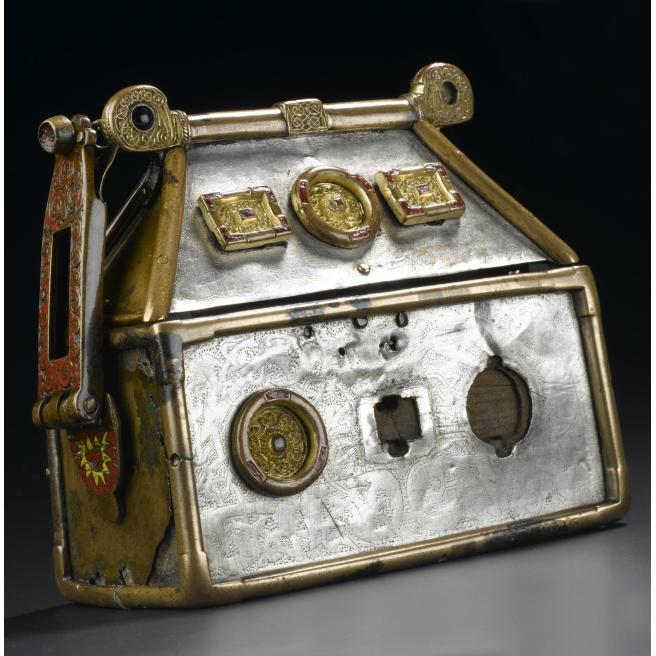
Biography
So much of the biography of this important object is unknown. It was acquired by the National Museum of Antiquaries of Scotland in 1933, whose collections now belong to the National Museums Scotland, and it was empty at the time of acquisition. The reliquary is perhaps best known for its traditional association with St Columba and identification as the Breacbennach battle standard carried at the Battle of Bannockburn, although recent research has cast much doubt on this identification. It is one of a small number of early medieval reliquaries, known as ‘house-shaped shrines’. In fact, this may be a misnomer – the shape of the reliquary is more likely to reference burial sarcophagi or (idealised) church buildings. This series of reliquaries is labeled Insular, indicating a likely origin in Britain or Ireland but recognizing that, because of a flourishing exchange of ideas and art-styles in the early medieval period, it is difficult to be more specific about where it was made.
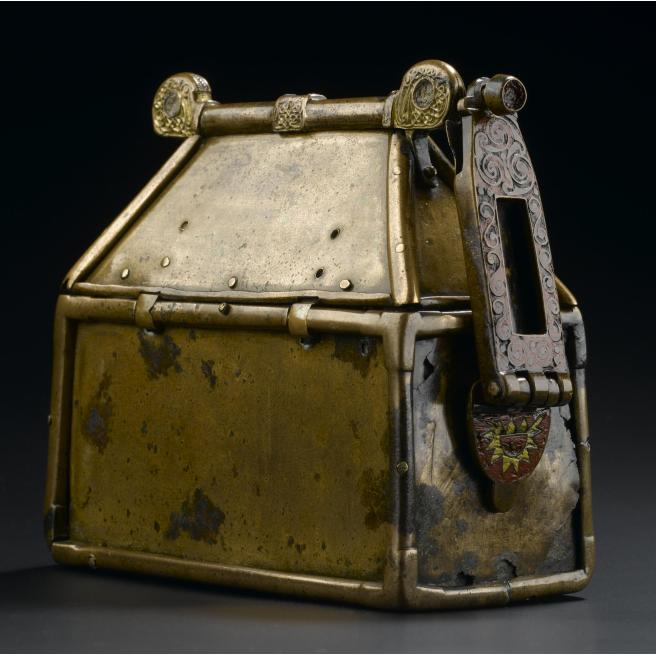
How is it constructed?
The reliquary is a very complicated and fragile object – excluding the pins which hold the shrine together, the reliquary as it survives today comprises 41 separate components. When it was complete, it would have been made from at least 56 pieces. The materials used to make the reliquary are: silver, copper-alloy (some of which is gilded), enamel, glass, wood and iron.
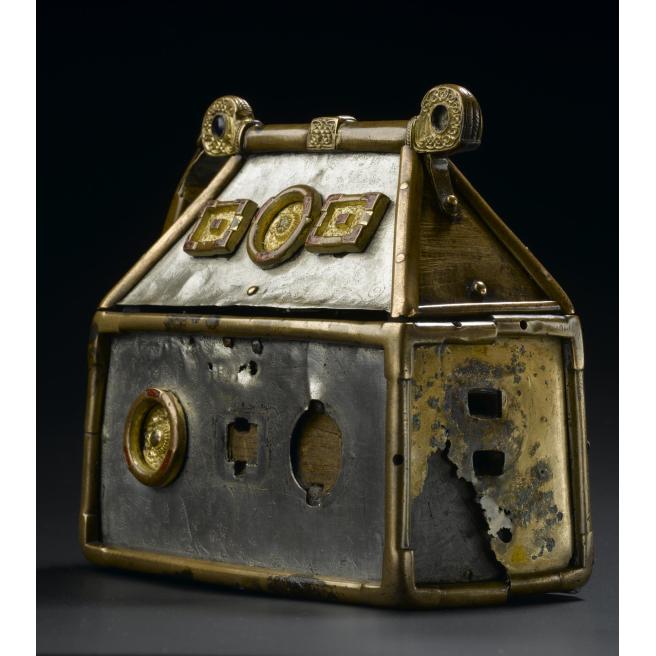
The core of the reliquary is a wooden box and lid, each carved from a single piece of yew. These are encased in metal plates – silver on the front of the box and lid and copper-alloy on the other faces – which are held in place by metal frames secured by pins. The front of the reliquary is decorated with very faint animal interlace on the silver plates. Six mounts were originally attached to the front of the reliquary, although only four now survive. Also missing is one of the two decorated plates attached to the narrow sides of the reliquary which would have attached a chain or strap to the box to allow it to be carried. The box would have been opened by drawing a small rod out of the left side of the box, thereby freeing the two halves of a clasp hidden inside the front wall of the box and the lid.
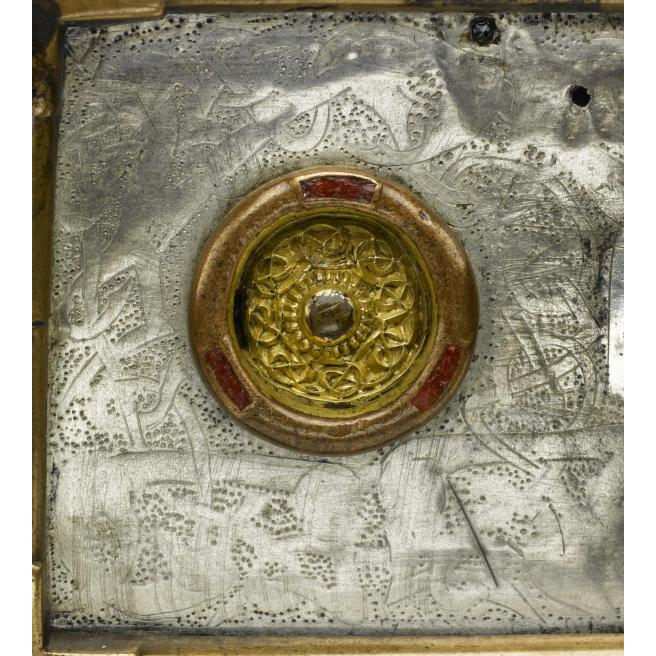
When was it made?
This is a complicated issue. In the past, Monymusk has been suggested to date to the 8th century AD. Our current research emphasises the many separate components which make up the reliquary as it now survives. These may not all be original or contemporary in date, so one of the main questions we are looking at is whether we can identify evidence of re-use or adaptation on the object. We’ve found hints that this is indeed the case, and over the next few months we will be investigating these further with colleagues in colleagues in Collections Science, part of the museum’s Collections Services Department.
What was it for?
Nine similar reliquaries survive, together with a growing body of shrine components. Most have been assumed to have been made in Ireland (Monymusk is usually regarded as a Scottish exception) but they are widely distributed, with examples from Italy and Scandinavia in addition to those found in Britain and Ireland. The Monymusk reliquary is now empty and there are no surviving records listing what it originally contained. It is a small box and so could only have accommodated little objects – perhaps small corporeal (body) relics, stones, or pieces of cloth. Reliquaries kept holy remains secure, controlled access to them, and allowed them to be portable. The early medieval house-shaped reliquary from Abbadia San Salvatore, Italy still contains relics that are plausibly its original contents.
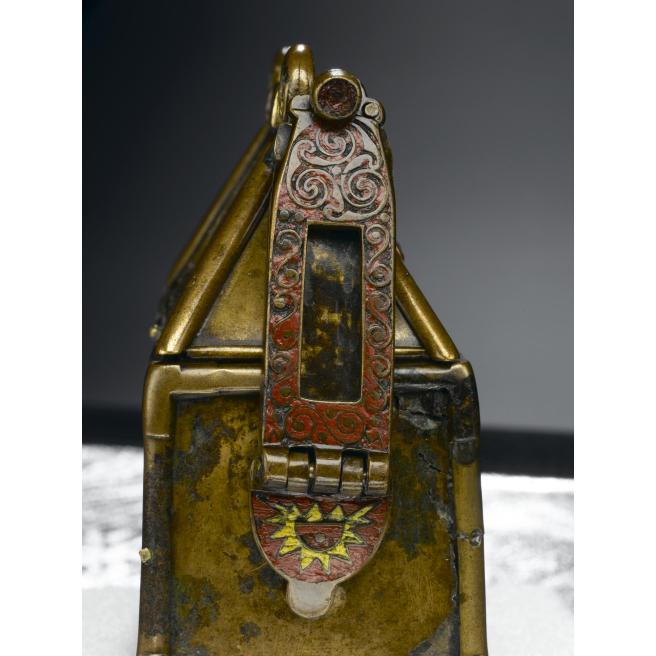
Symbolism and meaning
The decoration of the Monymusk reliquary emphasises the front face of the box and lid. Here, and here only, are silver (rather than copper) plates used, which dramatically reflect light. Early Christianity used shining precious metals and gleaming gems on reliquaries as both a metaphor for divine light and sanctity, and a means of radiating these to the faithful. Clusters of stones on reliquaries would have shone with light that was considered to have miraculous powers which would have complemented the relics contained within. It is these two silver parts of the reliquary, the front of the lid and box, that separate to reveal the contents when it is opened. And yet the decoration is most impressive and coherent when the reliquary is closed: when the box is open the lid is tipped back and the roughly carved inside surface is exposed and the lugs and pins fastening the mounts are revealed.
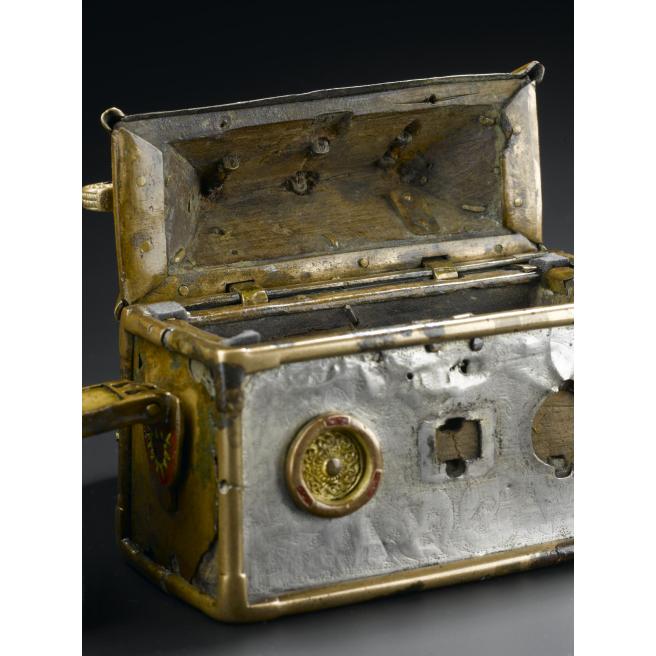
When the reliquary is carried, the decorative side plate is viewed to best advantage; when it is put down and the box opened, these plates are also lowered, therefore hiding their intricate decoration. The reliquary’s decoration is therefore best appreciated when it is closed, viewed from the front, and when being carried. But when Monymusk is closed the contents are hidden from view. One can imagine the opening of such a box and the revealing of hidden and holy contents as a performance, and part of other early Christian rituals. Monymusk would have been easily opened, which might suggest it was intended to be opened relatively frequently. Some other kinds of reliquaries such as book shrines for instance appear to be sealed and not intended to be opened.
Unlike some other early Christian reliquaries there are no figural or narrative scenes on Monymusk; no specific decoration relates to the saint or objects enshrined in the box. This is also true of the other Insular house-shaped reliquaries. It was a deliberate choice to opt for abstract designs such as interlace and entwined animals, rather than explicit imagery concerning the purpose of the box. This contrasts with carved stones, which carry pictures of people and events from the scriptures as well as interlace and other geometric designs.
It might seem strange that such an important Christian object as the Monymusk reliquary should apparently carry no overt Christian decoration. The archaeologist Robert Stevenson was the first to recognise Christian imagery on the reliquary – a subtle Christian cross formed by the spaces between the interlace strands on the central panel on the roof bar.
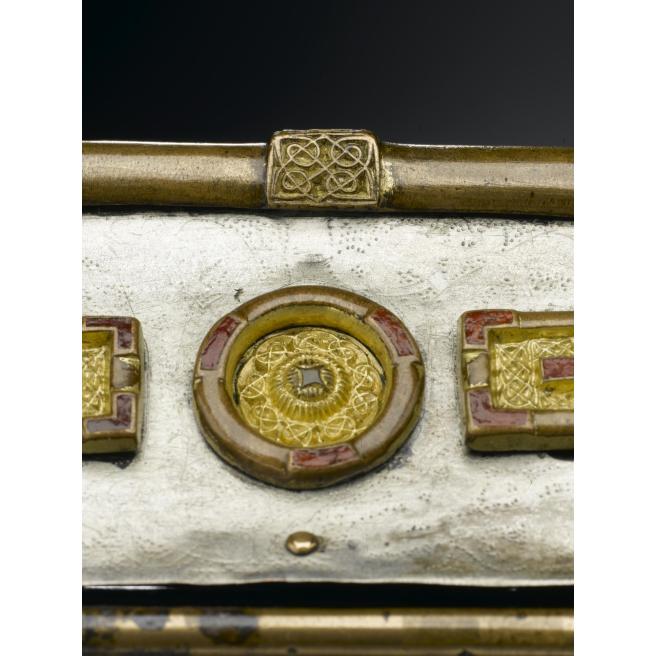
The forming of crosses ‘in reserve’ between interlace strands like this is now widely recognised as a common feature of Early Medieval illuminated manuscripts, metalwork and sculptured stones. A pair of birds’ heads, interlacing around a central jewelled setting, act as a terminal to each end of the reliquary’s roof bar. These birds face inwards, towards the interlace panel with the ‘hidden’ cross.
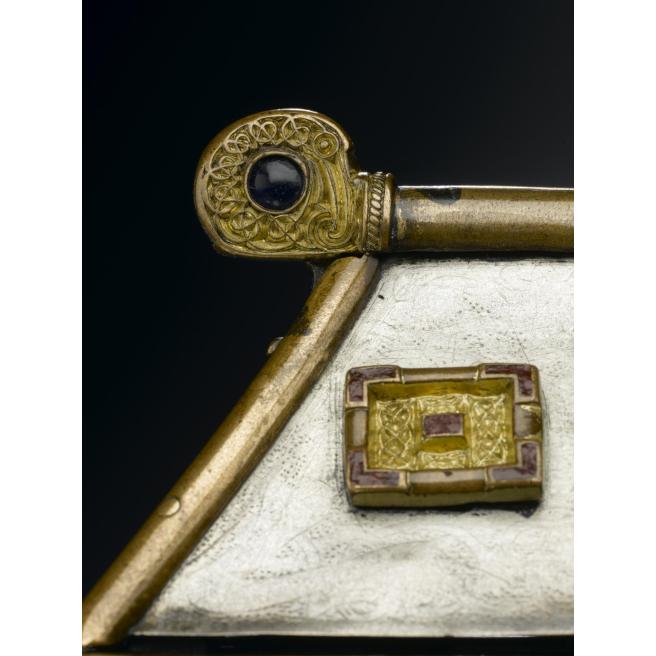
In Insular manuscripts, images of the faithful being drawn to Christ could be represented by a central cross flanked by two identical creatures, often peacocks – and it is possible that a similar meaning was intended for this aspect of the reliquary’s decoration. Subtle and complex imagery like this characterises much early Christian art from Britain and Ireland – it demands the viewer to take time to look, untangle and contemplate. Individuals would need to take more than a glance at Monymusk to find the symbolism for the first time.
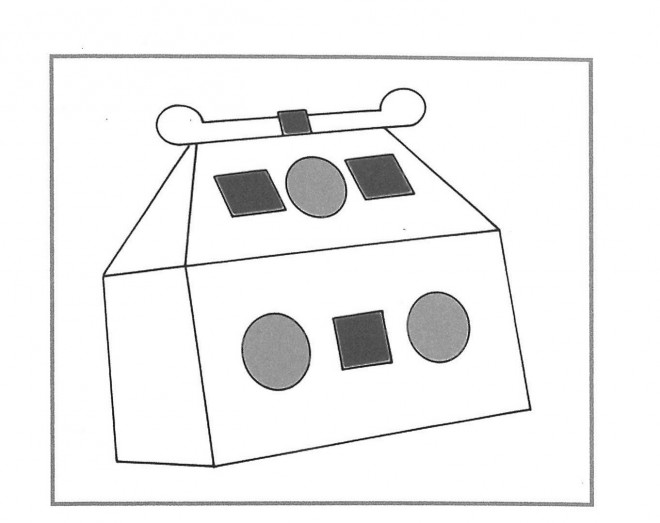
When the reliquary is closed, the whole series of decorative mounts on the lid and the box (when originally complete) together with the interlace panel on the roof bar can be read together as a Christian cross. The mounts can also be read as two separate groups of three – three circular mounts, and three rectangular mounts, both arranged at the points of a triangle. The design of each of the two types of mount also emphasises these decorative principles in miniature: the circular mounts have three panels of enamel, while the rectangular ones have four, with the spaces in between forming a subtle cross-shape. The top of the decorated side plate features a motif of three interlocking spirals, a common design among early Christian insular art. An obvious Christian interpretation for these designs composed in sets of three is an allusion to the holy Trinity of Father, Son, and Holy Spirit (although three is also a significant number in many other respects within Christianity). The central and interwoven Christian themes of the Crucifixion and the Trinity are here visually combined by the arrangement of the six mounts on the face of the reliquary in a cross shape.
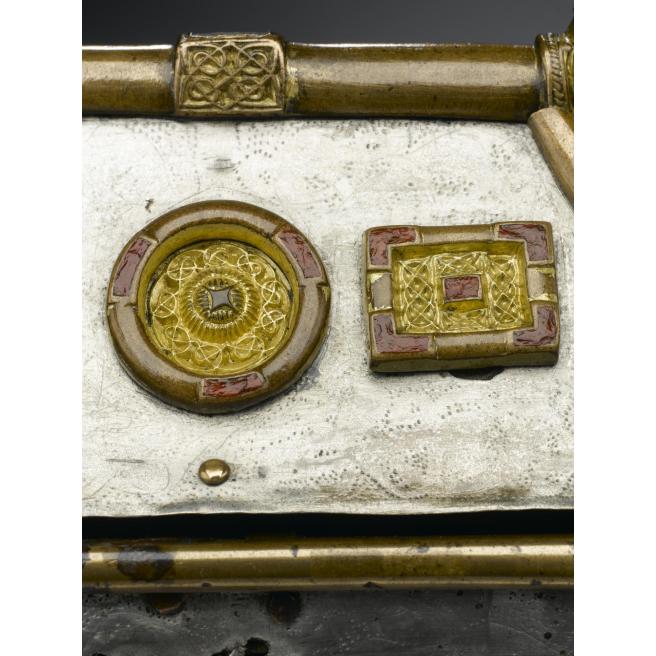
These decorative mounts are some of the most worn parts of the reliquary – the gilding has almost entirely been removed – suggesting they were perceived as special foci for veneration by those individuals who sought out the reliquary. This restricted wear suggests the repeated touching and rubbing of certain parts of the reliquary, perhaps those deemed to be particularly effective or symbolic. Reliquaries were powerful objects and this wear provides rare hints in the personal beliefs of early medieval individuals.
Next steps
Work in collaboration with colleagues in Collections Science, part of the museum’s Collections Services Department, to complete analysis of each of the reliquary’s components will be completed over the next few months. This will help us understand hints of different phases of construction of the object. Watch this space for further developments!
The Glenmorangie Research Project aims to extend our understanding of Scotland’s early medieval past and was established in 2008 following a partnership between National Museums Scotland and The Glenmorangie Company. The current phase of research, Scotland’s Earliest Silver: power, prestige and politics will look at the biography of this precious metal as it was used and reused in early medieval Scotland. You can read more about the Monymusk reliquary here.
